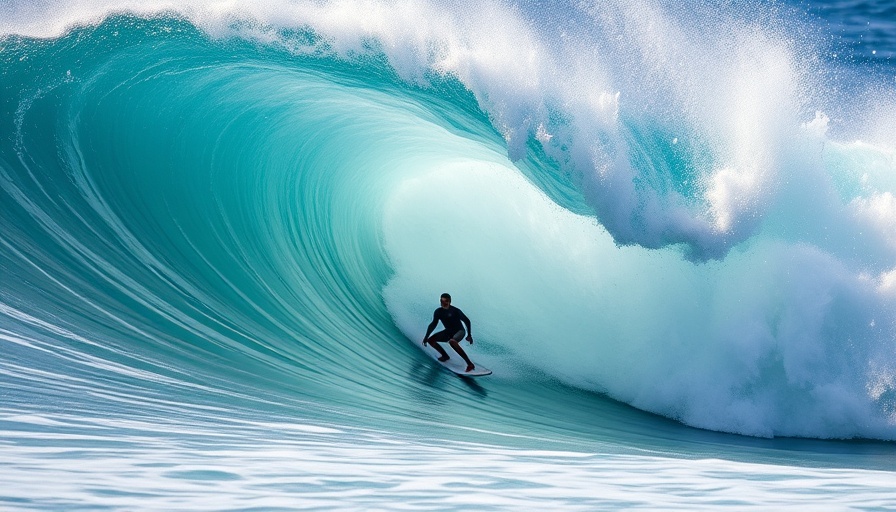
Understanding the Leash Debate Among Surfers
For avid surfers, the inclusion of a leash on their board is often seen as a safety measure, yet the conversation around using a leash while surfing in the world’s heaviest waves has sparked some heated debate. Proponents argue that leashes are essential tools designed to prevent accidents and keep the board attached, particularly after wipeouts. An unshackled board can pose a serious risk to other surfers, turning into a projectile in the surf. Each part of a surfboard—from its nose to its tail—can be a weapon if unleashed.
The Spirit of Surfing: Leashless Riding
On the flip side, certain surfers, especially longboarders, opt for a leashless ride to embrace the spirit of surfing. They argue that being tethered restricts their movement and ability to enjoy the meditative experience of surfing—cross-stepping and hanging ten. This sentiment is not without merit; many still manage to ride big waves without leashes while adhering to a self-regulatory respect that prevents accidents. However, the rise in injuries, particularly among those who wipe out without a leash, has prompted warnings from coastal communities, enforcing leash regulations in popular surf spots.
Kauli Vaast's Eye-Opening Performance
Professional surfer Kauli Vaast’s decision to surf leashless at the 2025 Tahiti Pro introduces another layer to the leash debate. By forgoing his leash, Vaast contests that he is free to swiftly escape dangerous situations, especially in XXL swells. In the context of high-pressure surfing, being tethered could indeed be more of a hindrance than a benefit. In fact, the concept of "tombstoning"—where one is held underwater by the leash during a hold-down—raises significant safety concerns for many surfers.
Protecting Yourself: The Safety Advantages
Plotting a line between safety and freedom, let's explore some advantages of leaving the leash behind. The potential risk from a leash can lead to increased danger, as it creates the chance of being dragged under by the board or, conversely, being struck by it after a tumultuous wipeout. Swimmers in heavy surf often find they can navigate easier without the added drag of a leash, allowing for quicker escapes from monstrous waves. In locations like Teahupoo and Nazaré, where sites drop dramatically into precarious reefs, avoiding entanglement with a leash becomes crucial.
Your Decision: Leash or No Leash?
Ultimately, the choice of whether to use a leash is personal and situational. While it reflects a deeper cultural connection to surfing and style—akin to riding a vintage longboard sans leash—the practical implications demand serious consideration. As surf conditions and personal skill levels fluctuate, surfers need to weigh the risks and rewards. From a safety standpoint, ensuring the safety of oneself and others in the water is paramount.
As the surfing community continues to challenge norms and reshape define values, it remains clear that the leash debate serves as a reminder: in the world of surfing, respect for the water, your board, and fellow surfers makes all the difference, whether tethered or not.
 Add Row
Add Row  Add
Add 




Write A Comment